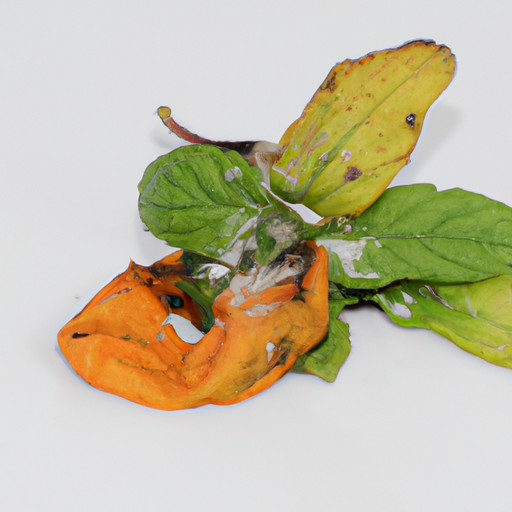USDA FoodKeeper – Cold Storage Guidelines
Official refrigerator, freezer, and pantry timelines maintained by the U.S. Department of Agriculture.
Visit USDA FoodKeeperWith its refreshing combination of citrus and cool mint, this herb adds a vibrant twist to dishes and drinks alike. To keep its lively flavor intact, store it in the fridge and enjoy it within five days—though you can safely use it for up to two extra days if needed. Just remember, while it’s delightful, it carries a medium risk if not handled properly!
Orange Mint may remain safe to consume after its expiration date if it has been stored correctly at the proper temperature and shows no signs of spoilage. However, risk increases over time, especially if storage conditions were not optimal.
Storage timeline guidance: Some food safety sources suggest that orange mint, when stored properly at the correct temperature and showing no spoilage signs, may remain usable for approximately 2 days after its expiration date.
Important: This is not a guarantee of safety. Food safety depends on many factors including storage temperature, handling, initial freshness, and contamination risk. Always inspect food carefully for spoilage signs (odor, texture, color changes) before consuming. When in doubt, discard it to avoid foodborne illness.


Fridge
32-40°F (0-4°C)
Wrap in damp paper towel and place in a plastic bag
5 days
Discoloration, wilted leaves
Tea, garnish for desserts, infused water
Spearmint
Sure thing! So, let's talk about expiration dates versus best quality for Orange Mint. The expiration date is the date until which the product is may be safe if properly stored to consume. Once that date passes, it's advisable not to eat it as the quality and safety may have deteriorated. On the other hand, the best quality date refers to the period during which the product is at its freshest and most flavorful, but it doesn't necessarily mean it's unsafe to eat after that date. For example, if you have a pack of Orange Mint leaves with an expiration date of June 1st, you should not consume them after that date for safety reasons. However, if the best quality date is May 25th, the leaves may still be safe to eat after that date, but the flavor and freshness might not be as good. Personally, I tend to follow the expiration dates for perishable items like herbs to ensure food safety. However, if the product looks and smells fine past the best quality date, I might still use it for cooking or making infused water, considering it's safe to consume.
To check if Orange Mint has gone bad, look for any dark or slimy spots on the leaves, which indicate mold growth. The leaves should have a fresh, minty aroma; if they smell musty or off, they are likely spoiled. Additionally, wilted or mushy leaves suggest that the Orange Mint is no longer fresh and should be discarded.
Hey there! Let's talk about Orange Mint and how to enjoy it safely without any unwanted tummy troubles. When it comes to fresh herbs like Orange Mint, there are some foodborne illness risks to be aware of. Sometimes, Orange Mint can be contaminated with harmful bacteria like Salmonella or E. coli, especially if not washed properly. Symptoms of foodborne illness can include stomach cramps, diarrhea, and nausea. No one wants to deal with that after enjoying a delicious meal or tea made with Orange Mint, right? To stay safe, always make sure to wash your Orange Mint thoroughly before using it in your recipes. You can do this by rinsing it under cool running water and patting it dry with a clean towel or paper towel. Also, store it in the refrigerator to keep it fresh and prevent any bacteria from growing. By taking these simple precautions, you can savor the refreshing flavor of Orange Mint without any worries. Stay safe and enjoy your culinary adventures!
Hey there! Orange mint can be a fantastic addition to your kitchen herb collection. Here are some practical storage hacks and pro tips for keeping your orange mint fresh and flavorful: 1. **Store it in water**: Like fresh flowers, you can trim the stems and keep your orange mint in a glass of water on the countertop. Change the water every couple of days to keep it fresh. 2. **Use a damp paper towel**: Wrap your orange mint in a damp paper towel and place it in a resealable plastic bag in the fridge. This will help maintain its moisture. 3. **Freeze it**: If you have a surplus of orange mint, consider freezing it in ice cube trays with water. This way, you can easily pop a minty ice cube into your drinks in the future. 4. **Dry it**: Hang your orange mint upside down in a well-ventilated area to dry. Once dried, store it in an airtight container for future use in teas or recipes. I personally love adding fresh orange mint to my summer drinks and salads for a burst of refreshing flavor. Give these storage hacks a try and keep your orange mint fresh for as long as possible!
Hey there! Let's chat about Orange Mint, one of the coolest herbs out there. Did you know that Orange Mint, also known as Citrus Mint, is a delightful hybrid of two classic mints - peppermint and spearmint? It boasts a refreshing citrusy twist that can really brighten up your day! Historically, mint has been cherished for centuries for its medicinal properties and culinary uses. Ancient Greeks used mint to freshen their breath and aid digestion, while ancient Egyptians valued it for its aromatic qualities in perfumes and oils. Orange Mint specifically has gained popularity for its unique flavor profile, making it a favorite for teas, cocktails, and desserts. In many cultures, mint symbolizes hospitality and is often used to welcome guests or as a gesture of goodwill. Its vibrant aroma and flavor can transport you to sunny Mediterranean gardens or cozy tea rooms. Whether you're sipping on a refreshing Orange Mint mojito or adding a twist to your favorite salad, this herb is a versatile gem that can elevate any dish. So, next time you come across Orange Mint, give it a try and let its citrusy charm work its magic!
If Orange Mint has been left at room temperature for a few hours, it should be safe to consume within the recommended shelf life of 5 days. However, prolonged exposure to room temperature can affect its flavor and freshness. Check for any signs of wilting or discoloration before use.
Once opened, Orange Mint should be used within 2 days past its expiration date for optimal freshness and flavor. After this period, it's best to discard it, as the quality may have significantly declined, increasing the risk of bacterial contamination.
Cooking Orange Mint can significantly reduce its shelf life. Heat exposure can cause the herb to lose its aroma, flavor, and nutritional content. It's best to add fresh Orange Mint as a garnish or towards the end of cooking to preserve its delicate flavors.
Still not sure if it's safe?
Our Food Expiration & Storage Quick Guide helps you decide quickly — with clear keep-or-discard rules for the most common foods.
Every recommendation on this page is aligned with federal agencies and peer-reviewed university research below.
Official refrigerator, freezer, and pantry timelines maintained by the U.S. Department of Agriculture.
Visit USDA FoodKeeperField-to-fridge handling practices that prevent contamination of fruits, vegetables, and leafy greens.
Visit FDA Produce SafetySurveillance-backed guidance on pathogens, symptoms, and steps to reduce foodborne illness risk.
Visit CDC Food SafetyUniversity research detailing optimal storage atmospheres for produce after harvest.
Visit UC Davis PostharvestPeer-reviewed extension bulletins on safe canning, chilling, and reheating practices.
Visit Penn State ExtensionNeed deeper reading? Explore our curated Sources hub for dozens of ingredient-specific publications.
Reviewed by the Can I Eat Expired Editorial Team, using food safety guidance from the USDA, FDA, CDC, and university extension programs.
Dairy Products
View expiration date and storage guide →
Fruits & Vegetables
View expiration date and storage guide →
Beverages
View expiration date and storage guide →
Cooking Ingredients
View expiration date and storage guide →
Beverages
View expiration date and storage guide →
Fruits & Vegetables
View expiration date and storage guide →
Ready-to-Eat Meals
View expiration date and storage guide →
Dairy Products
View expiration date and storage guide →
Breakfast Foods
View expiration date and storage guide →
Important: These are general guidelines based on authoritative sources listed above. Always use your best judgment and when in doubt, throw it out. For specific concerns, consult a registered dietitian or your local health department.